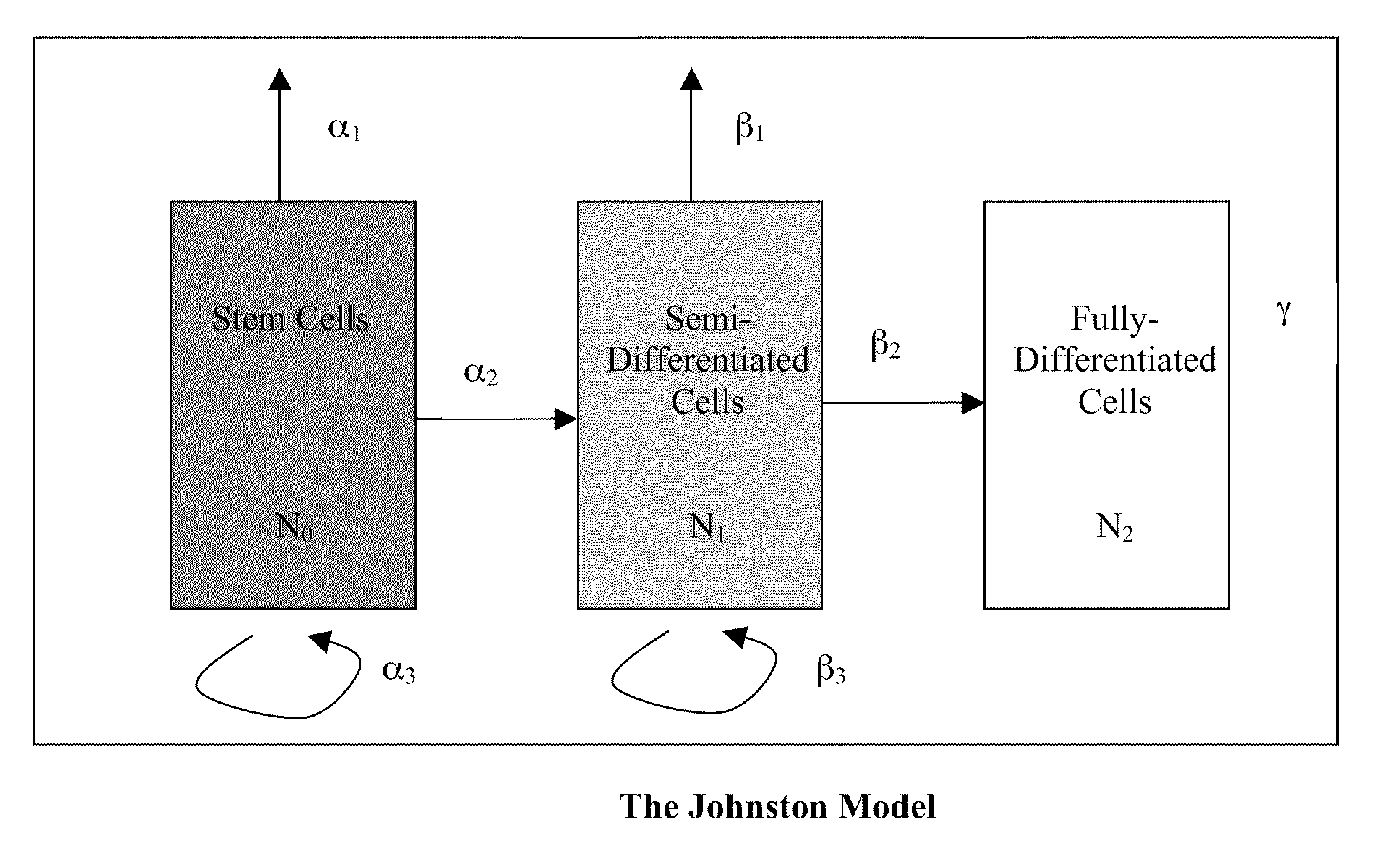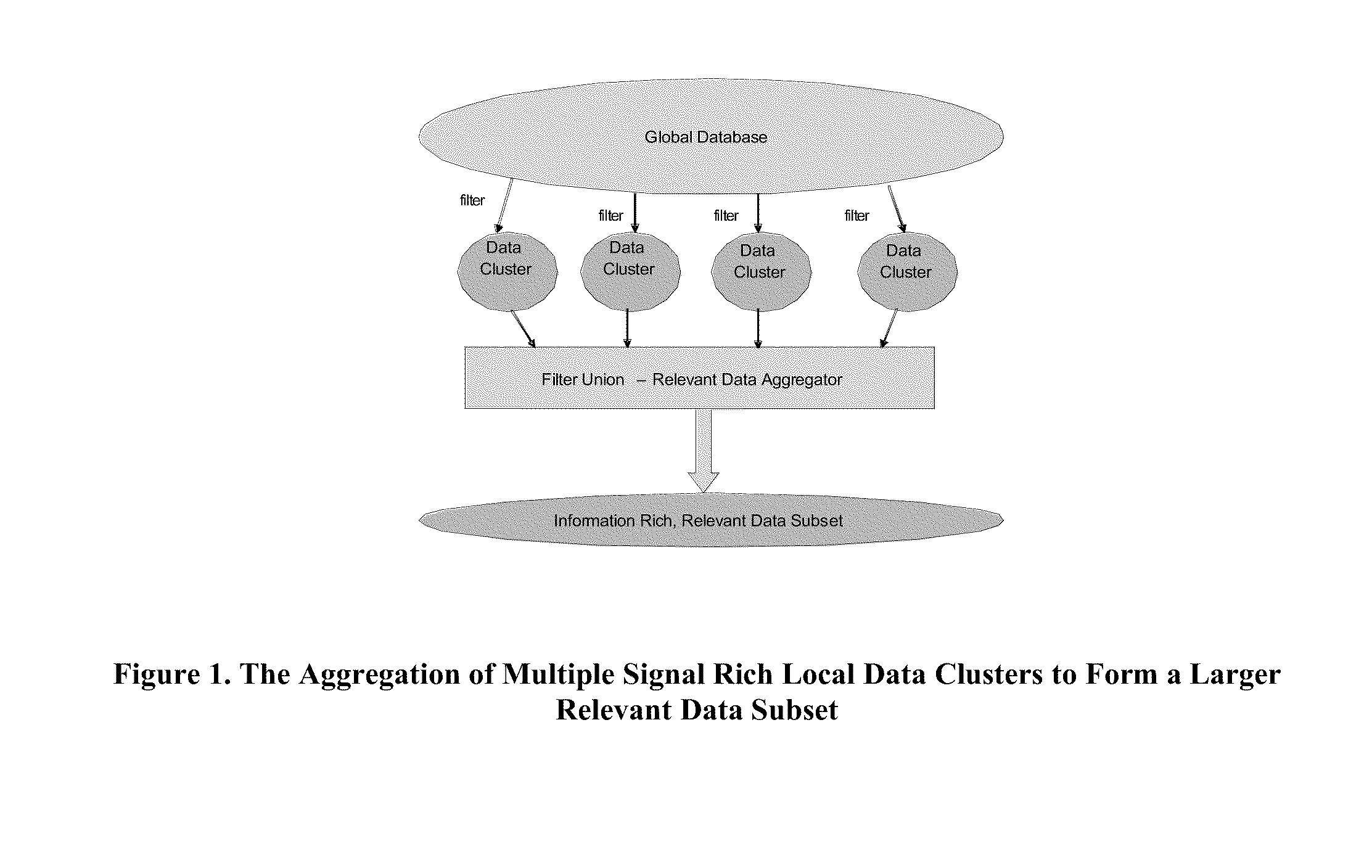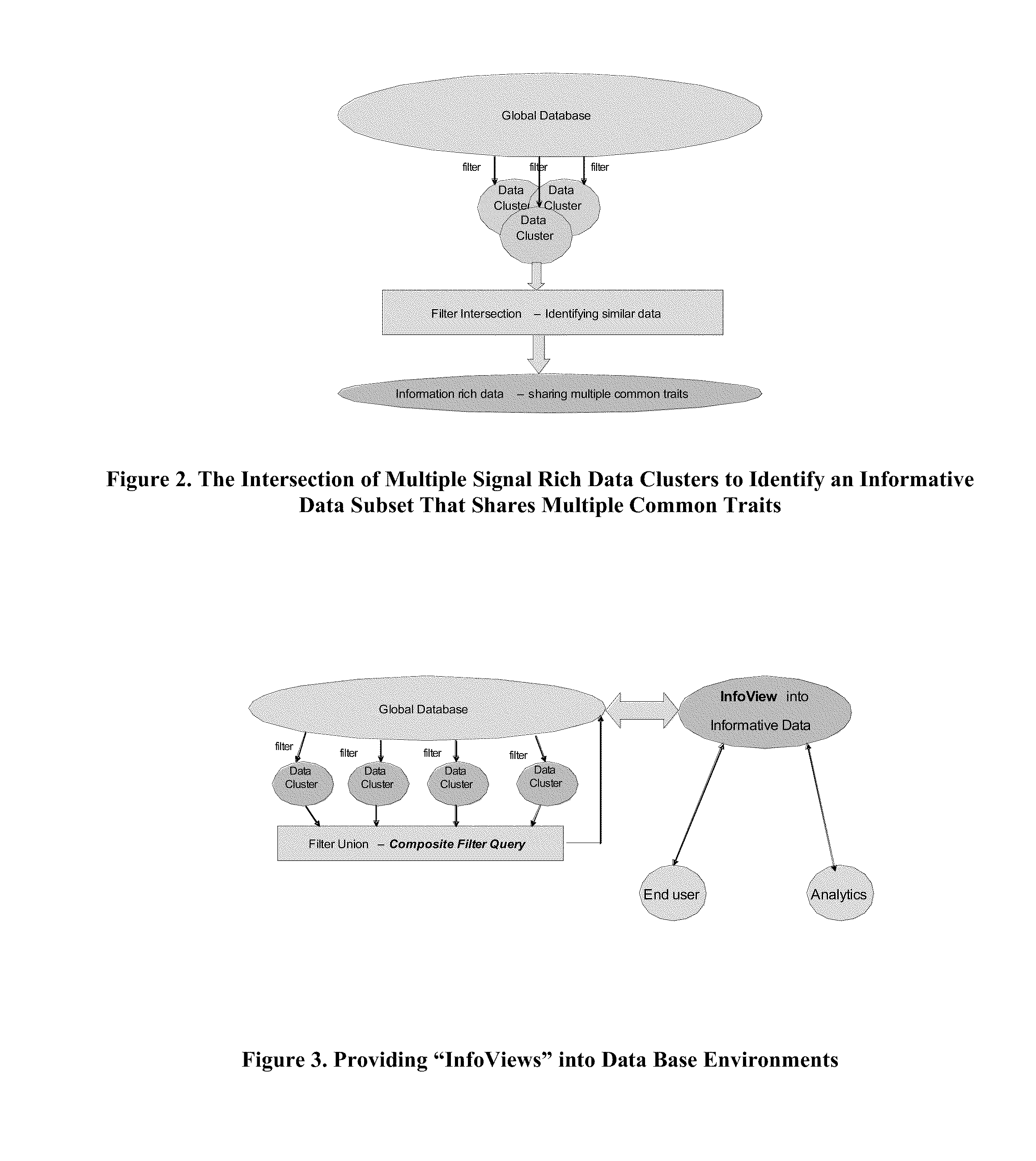Methods for Enabling a Scalable Transformation of Diverse Data into Hypotheses, Models and Dynamic Simulations to Drive the Discovery of New Knowledge
a dynamic simulation and data technology, applied in the field of methods for enabling a scalable transformation of diverse data into hypotheses, models and dynamic simulations to drive the discovery of new knowledge, can solve the problems of fewer and smaller models being used to represent large data environments, further computational costs incurred in building model structures themselves, etc., to achieve the reduction of complexity and the resultant computational efficiency, and the effect of simplifying databases
- Summary
- Abstract
- Description
- Claims
- Application Information
AI Technical Summary
Benefits of technology
Problems solved by technology
Method used
Image
Examples
example 1
Data Filtering & Identification of Relevant Data from the AERS Data Base and Building Signal Models from that Data
Motivation:
[0208]The methods of the present invention describe principled means by which “signal-rich” data subsets can be automatically identified within a large and potentially noisy data environment. The use of general mutual information metrics to drive the identification of the subsets has the advantage of being “agnostic” to the type and character of the underlying data. In particular, these metrics do not assume an a priori distribution of states within the data environment, but are inherently adaptive to the prevailing data statistics. It is the generality of the approach that makes the methods of the present invention suitable to improve the quality of any data driven model or simulation by fundamentally improving the signal to noise ratio of the data that is used.
[0209]In order to demonstrate the generality of the methods of the present invention, we present an...
example 2
Use of Multi-Scale Models to Develop Simulations of a Biological System
Multiscale Modeling of Colon Cancer
[0231]Colon cancer is one of the best characterized cancers with many models being published that include highly disparate datasets that can be translated into networks that operate over multiple scales to describe how the disease originates and develops in humans and animal models. Several attempts have been made to develop mathematical models of the disease to integrate and try and make sense of the biological information being generated and generate new hypotheses that can then be tested in the laboratory.
[0232]In order to understand the ways in which subcellular (microscopic) events influence macroscopic tumor progression it is necessary to develop models that incorporate multiple temporal and spatial scales. Moreover, there are many discrete models that describe specific aspects of colon cancer and the issues that link normal tissue to colorectal cancer. Finally, the substa...
PUM
 Login to View More
Login to View More Abstract
Description
Claims
Application Information
 Login to View More
Login to View More - R&D
- Intellectual Property
- Life Sciences
- Materials
- Tech Scout
- Unparalleled Data Quality
- Higher Quality Content
- 60% Fewer Hallucinations
Browse by: Latest US Patents, China's latest patents, Technical Efficacy Thesaurus, Application Domain, Technology Topic, Popular Technical Reports.
© 2025 PatSnap. All rights reserved.Legal|Privacy policy|Modern Slavery Act Transparency Statement|Sitemap|About US| Contact US: help@patsnap.com



